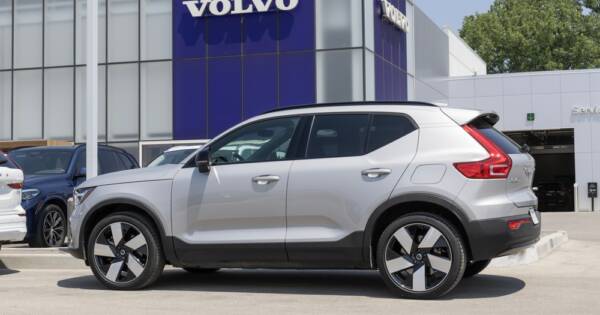These days, it’s not just enough for a small car to provide fuel efficiency. As a result, offerings like the Hyundai Elantra are loaded with goodies that push them to near-premium status. With the 2017 model year, the Elantra is early into its sixth production cycle, thereby making it relatively fresh with its redesign and an Eco trim to join the base-level SE and the top-of-the-line Limited.
Performance
The new Elantra’s SE and Limited trims are powered by a 2.0-liter inline 4-cylinder (I4) engine that provides 147 horsepower and 132 lb-ft of torque. The SE gets a 6-speed manual transmission, while the Limited gets a 6-speed automatic transmission with a SHIFTRONIC® shifter to allow manual upshifting and downshifting. Hyundai adds an Active ECO system on the Limited to boost fuel efficiency, thus making it match the SE’s fuel economy at 28/37 mpg.
Neither, however, are as fuel efficient as the aptly named Eco trim, which has a fuel economy of 32/40 mpg. Thank its drivetrain: a 1.4-liter turbocharged I4 that is linked with a 7-speed EcoShift dual-clutch transmission for manual and automatic gear shifting. However, the Eco engine is not as powerful. It yields 128 horsepower, in addition to 156 lb-ft of torque.
Seating and Space
With seating for up to five people, the Hyundai Elantra provides 95.8 cubic feet of passenger volume. Although cargo volume is measured at 14.4 cubic feet, you can expand it by folding down the rear seatback—thanks to its 60/40 split-folding design. Standard on the Elantra are premium cloth seat covering and front-seat 6-way power adjustability. On the Eco, Hyundai adds heating capability on the front seats. And the Limited gets power lumbar support on its driver’s seat.
Infotainment
Providing all the entertainment on the Elantra is a six-speaker stereo system, which comes with an AM/FM radio tuner, CD/MP3 player, and a three-month SiriusXM satellite radio trial subscription. The Eco and Limited gets additions that include a 7-inch high-resolution touchscreen for displaying audio information, steering wheel-mounted controls for maximizing convenience, a Bluetooth hands-free phone system with voice recognition, and Android Auto™ and Apple CarPlay™ for using your Android device or iPhone to control the stereo’s head unit.
Comfort and Convenience
For features like dual-zone automatic climate control (complete with an air purifier), push-button engine start, proximity key entry, and a 3.5-inch TFT monochromatic cluster display, you’d have to upgrade to the Elantra’s Eco trim.
The Limited stands out with unique features like Blue Link® Connected Care, a communications system from Hyundai that provides services such as automatic collision notification, SOS emergency assistance, car care appointment scheduling, and a monthly vehicle health report. It comes with a three-month trial subscription.
Safety Features
Auto crash protection on the new Hyundai Elantra is provided by front impact airbags facing the driver and front passenger, side impact airbags mounted on the front seats, and side curtain airbags flanking both rows of seats. There’s also a knee airbag at the driver’s side.
Also on the vehicle are electronic stability control to retain or regain driving control in less-than-favorable situations, anti-lock braking for preventing wheel-lock up when applying the brakes, traction control for handling slippery surfaces, and brake assist and electronic brake-force distribution for maximizing efficiency in stopping ability.
For security, the Elantra comes with a remote keyless entry system and panic alarm to deter car thieves. On the Eco and Limited, Hyundai upgrades the driver’s blind spot mirror to a blind spot detection system, which includes lane change assist and rear cross-traffic alert. The aforementioned models also get a rearview camera, so that you can see an image of the back of the vehicle when parallel parking or if you’re backing out of a garage.
Competition
As two of the best-selling, most well-rounded, and most highly acclaimed nameplates in automotive history, the Honda Civic and the Toyota Corolla perennially remain the Elantra’s chief rivals. Another worthy opponent is the Mazda 3, which is preferred by drivers who want a sporty and zippy feel without sacrificing fuel economy.
Pros and Cons
The Hyundai Elantra doesn’t exactly have the most powerful engines, and that prevents driving from being more exciting than it should be. However, you’d be hard-pressed to find a safer compact car. The Elantra is an IIHS (Insurance Institute for Highway Safety) “Top Safety Pick Plus” vehicle, with excellent scores in crashworthiness and front crash prevention. Also, the Elantra is laden with user-friendly hi-tech features, and it is relatively roomy and comfortable.
Size Classification and MSRP
The Elantra, as a compact four-door sedan, is smaller than the other cars in Hyundai’s sedan line-up, which are the mid-size Sonata and the full-size Azera. The starting MSRP is $17,150 for the SE, $20,650 for the Eco, and $22,350 for the Limited.
 Darren Brode / Shutterstock.com
Darren Brode / Shutterstock.com


